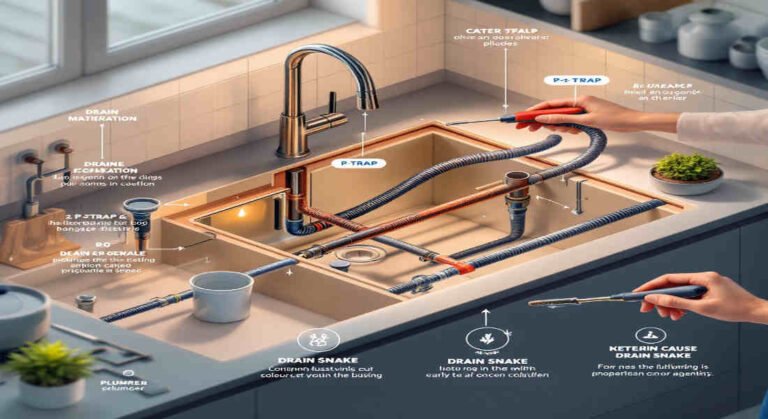A backed-up kitchen sink is one of the most common and frustrating household issues. It disrupts your daily routine, makes your kitchen unhygienic, and can even lead to costly plumbing repairs if left unchecked. But don’t worry—most sink clogs can be resolved without professional help. With a little knowledge, the right tools, and some patience, you can fix the problem yourself and save time and money.
Understanding the Causes of a Backed-Up Kitchen Sink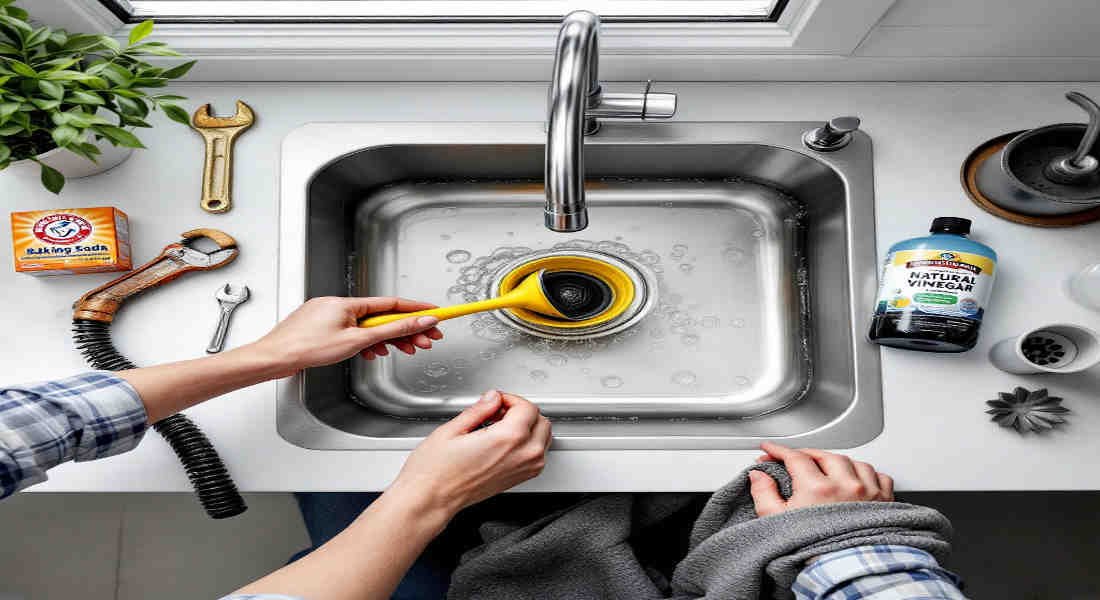
Before diving into the solutions, it’s important to understand why kitchen sinks clog in the first place. Knowing the causes can help you not only fix the problem but also prevent it from happening again.
Common Reasons for Kitchen Sink Clogs
- Food Debris: Small food particles often get washed down the drain. Over time, they accumulate and block the pipes.
- Grease Buildup: Fats, oils, and grease solidify as they cool, creating stubborn clogs in your plumbing.
- Foreign Objects: Items like utensils, bottle caps, or even small toys can accidentally end up in the sink, causing blockages.
- Soap Scum: Soap combined with hard water can create a sticky residue that clings to the walls of your pipes.
Plumbing Design and Garbage Disposal
The way your plumbing is designed can also contribute to clogs. Older houses with outdated pipes or poorly designed plumbing systems are more prone to backups. Additionally, garbage disposals can worsen blockages if used improperly (e.g., overloading the disposal or grinding inappropriate materials like bones or fibrous vegetables).
Signs Your Kitchen Sink is Backed Up
- Slow Draining: Water takes longer than usual to empty from the sink.
- Gurgling Sounds: You hear bubbling or gurgling when water goes down the drain.
- Water Backups: Water may back up into the sink when you run the faucet or dishwasher.
- Unpleasant Odors: Foul smells from food debris or grease trapped in the pipes.
Safety Precautions Before You Start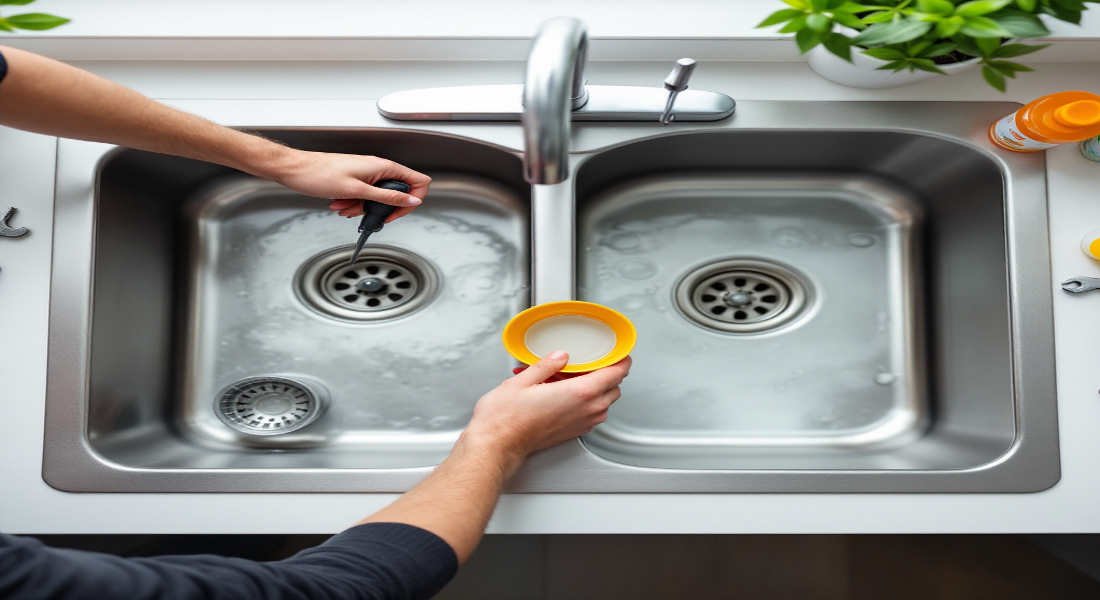
Before attempting to fix your clogged sink, it’s essential to stay safe and prevent unnecessary damage. Here’s how:
- Turn Off the Water Supply: If the clog is severe, turn off the faucet and avoid running water to prevent overflowing.
- Power Off the Garbage Disposal: If your sink has a garbage disposal, turn off its power supply to avoid accidents.
- Wear Protective Gear: Use rubber gloves to protect your hands from dirty water and sharp objects in the pipes.
- Prepare Your Workspace: Place towels or a bucket under the sink to catch any leaks during the repair process.
You may also read (stickiness from my home kitchen cabinets).
Having the right tools at hand will make the job easier and more efficient. Here’s a list of items you’ll need:
Common Household Items
- Plunger: A simple yet effective tool for clearing blockages.
- Baking Soda and Vinegar: Natural cleaning agents that can dissolve minor clogs.
- Boiling Water: Helps melt grease and soap scum.
Specialized Tools
- Drain Snake (or Auger): A flexible tool designed to reach and remove clogs deep in the pipes.
- Channel Lock Pliers: Useful for disassembling pipes like the P-trap.
- Wire Hanger: A DIY alternative to a drain snake for fishing out debris.
Optional Items
- Rubber Stopper: To seal one side of a double sink while plunging the other.
- Bucket: To catch water when disassembling pipes.
- Flashlight: To inspect dark areas under the sink.
Step-by-Step DIY Methods to Fix a Backed-Up Kitchen Sink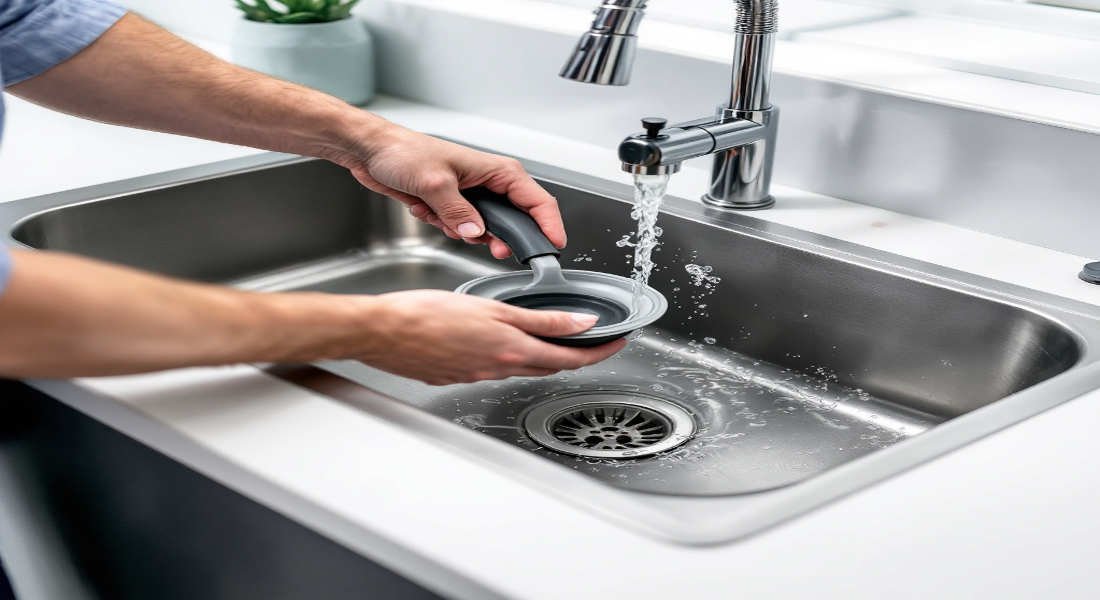
Initial Quick Fixes
Sometimes, a simple solution is all you need to restore your sink’s functionality.
Using Boiling Water
Boiling water is a quick and easy method to dissolve grease and soap buildup.
- Heat a large pot of water to a rolling boil.
- Carefully pour the boiling water directly down the drain in two to three stages, pausing between pours.
- Test the sink to see if the water drains properly.
Baking Soda and Vinegar Method
This natural solution works wonders for minor clogs caused by grease or food debris.
- Pour ½ cup of baking soda down the drain.
- Follow with 1 cup of vinegar.
- Cover the drain with a stopper or cloth and let the mixture sit for 15-20 minutes.
- Flush the drain with hot water to clear the clog.
Salt and Baking Soda Mix
For tougher clogs, try this dry mix method:
- Combine ½ cup of salt with ½ cup of baking soda.
- Pour the mixture down the drain and let it sit overnight.
- Flush with boiling water the next morning.
Mechanical Methods
If the initial fixes don’t work, it’s time to get hands-on with mechanical tools.
Using a Plunger
- Place the plunger over the drain and ensure a tight seal.
- For double sinks, seal the second drain with a rubber stopper or wet cloth.
- Push and pull the plunger vigorously for about 30 seconds.
- Check if the clog has cleared. Repeat as needed.
Checking and Clearing the Garbage Disposal
- Turn off the power for garbage disposal.
- Inspect the disposal for visible debris and remove it with tongs or pliers.
- Reset the disposal unit and test its functionality.
Using a Drain Snake or Wire Hanger
- Insert the drain snake or straightened wire hanger into the drain.
- Rotate or wiggle the tool to snag the clog.
- Pull out the debris and flush the drain with hot water.
Advanced DIY Repairs for Persistent Problems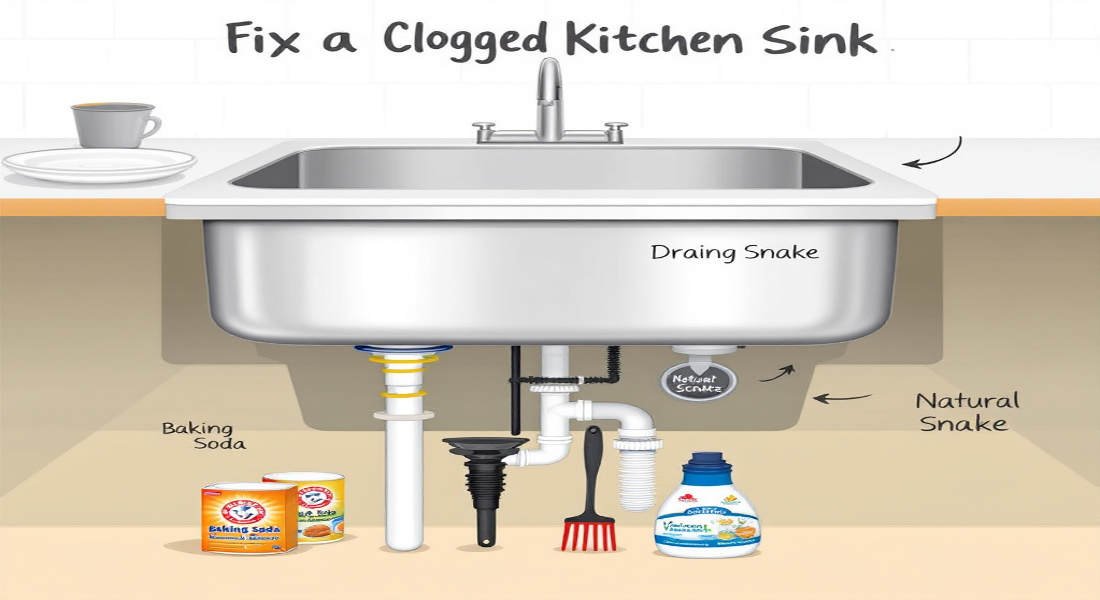
If the clog persists despite your efforts, you may need to disassemble parts of the plumbing.
Cleaning the P-Trap
The P-trap is the curved pipe under your sink that traps debris.
- Place a bucket under the P-trap.
- Use channel lock pliers to unscrew the trap.
- Remove the trap and clear out debris.
- Reassemble and test the sink.
Fixing Leaks or Damaged Pipes
While disassembling, check for leaks or worn-out washers. Replace any damaged parts to prevent future issues.
Preventive Maintenance Tips to Avoid Future Clogs
Once your sink is back to normal, follow these tips to keep it running smoothly:
- Dispose of Food Waste Properly: Scrape plates into the trash before rinsing. Avoid pouring grease down the drain.
- Use Natural Cleaners Regularly: Pour a mixture of baking soda and vinegar down the drain once a month to prevent buildup.
- Avoid Flushing Inappropriate Items: Never put coffee grounds, eggshells, or fibrous vegetables down the sink.
- Inspect Your Garbage Disposal: Regularly check and clean your disposal to prevent jams.
When to Call a Professional Plumber
While most clogs can be fixed with DIY methods, some situations require expert help.
Signs You Need a Plumber
- Persistent clogs despite repeated attempts to clear them.
- Water backing up into other fixtures (e.g., dishwasher or bathroom sink).
- Leaks or pipe damage that require professional repair.
Cost vs. DIY
Although hiring a plumber may seem expensive, it’s often worth it for severe clogs or complex plumbing issues.
You may also read (remove tiny ants from your home).
